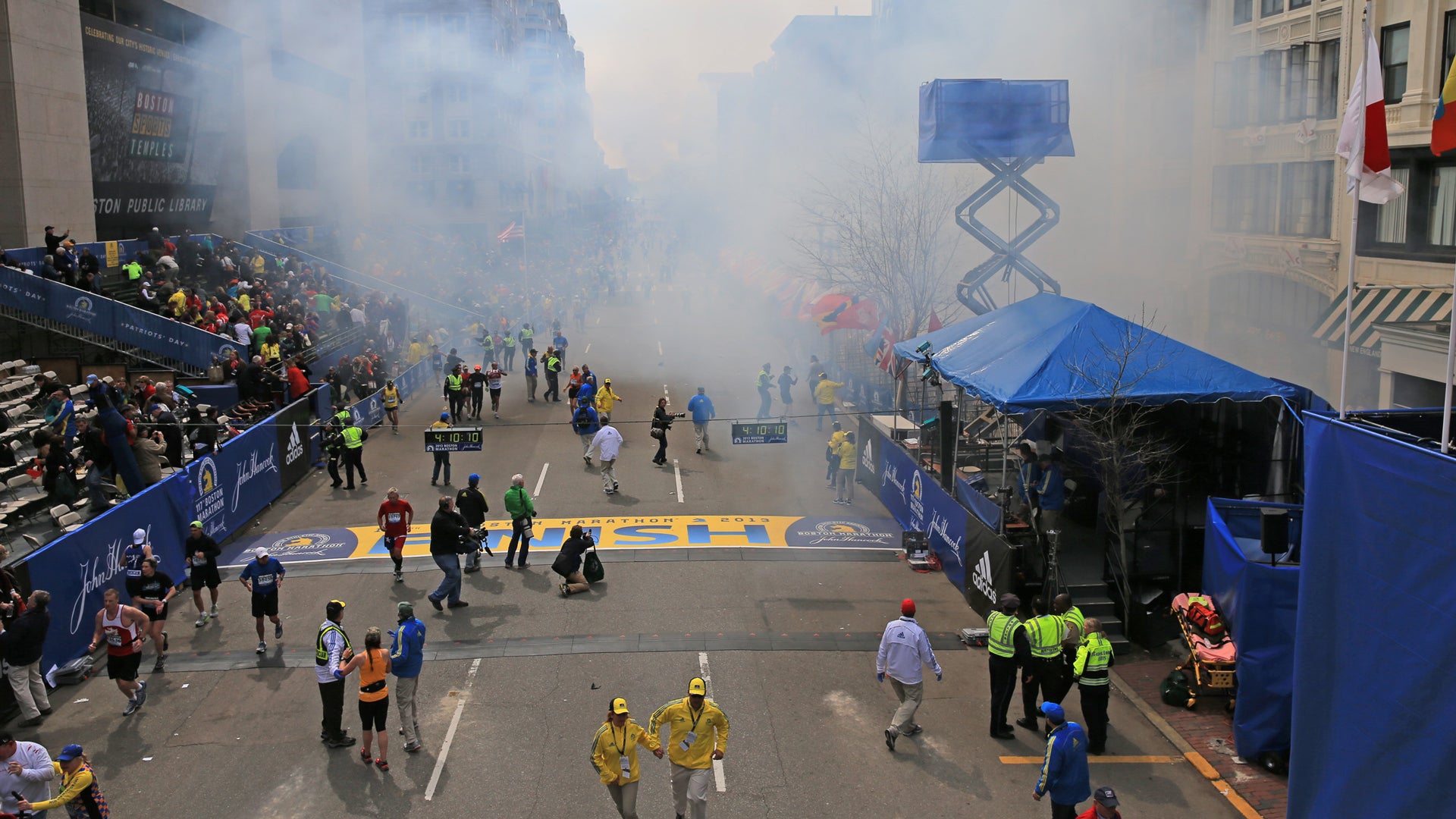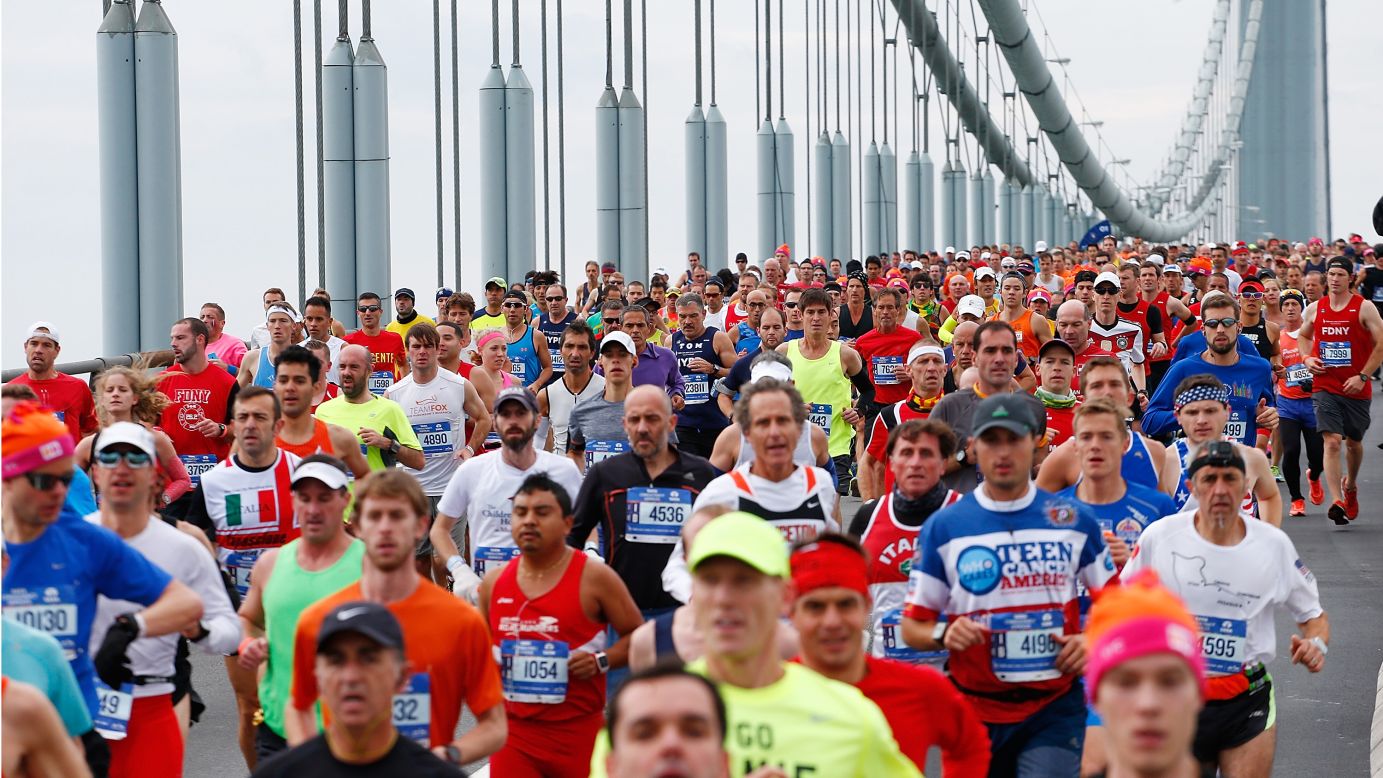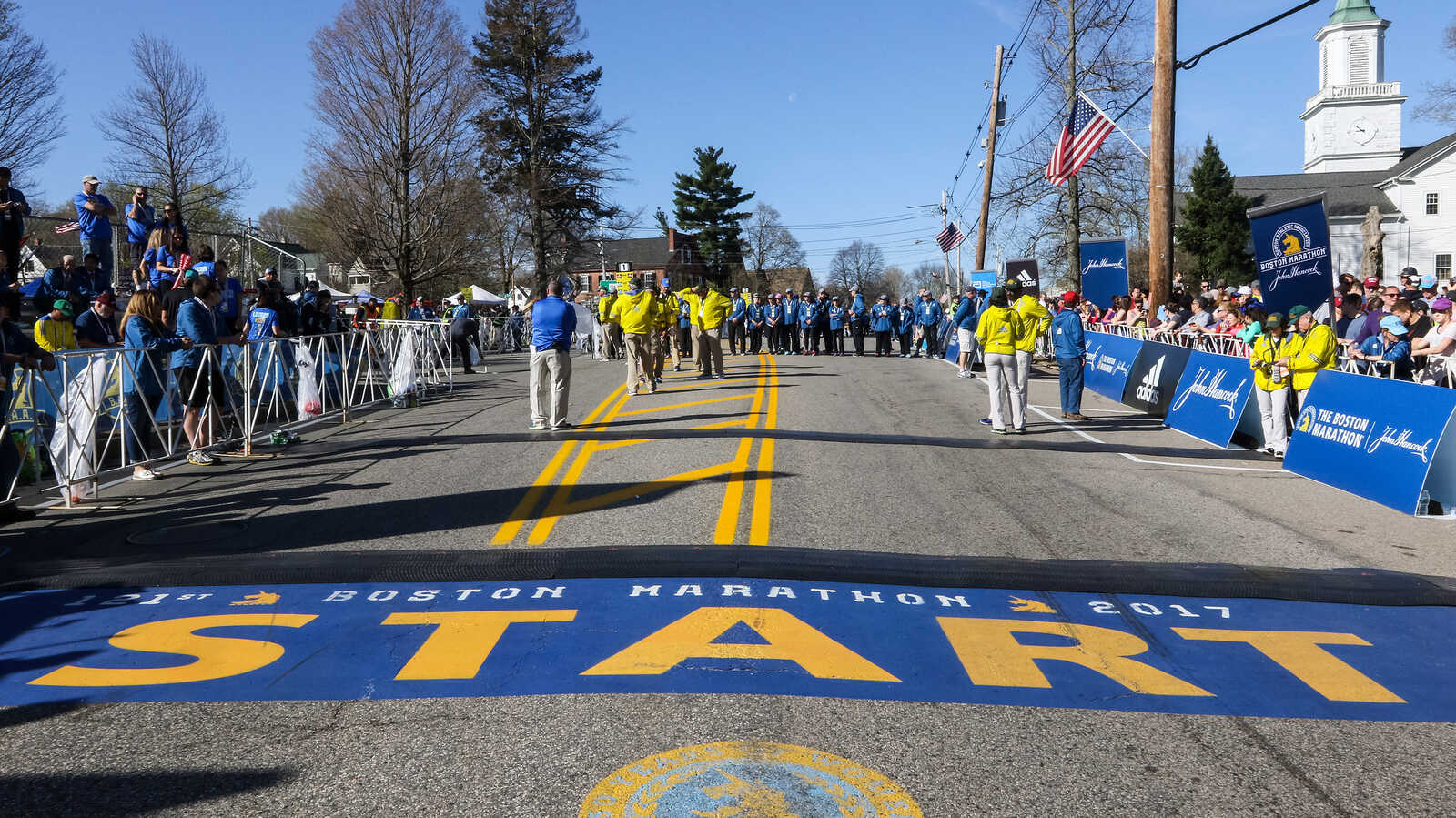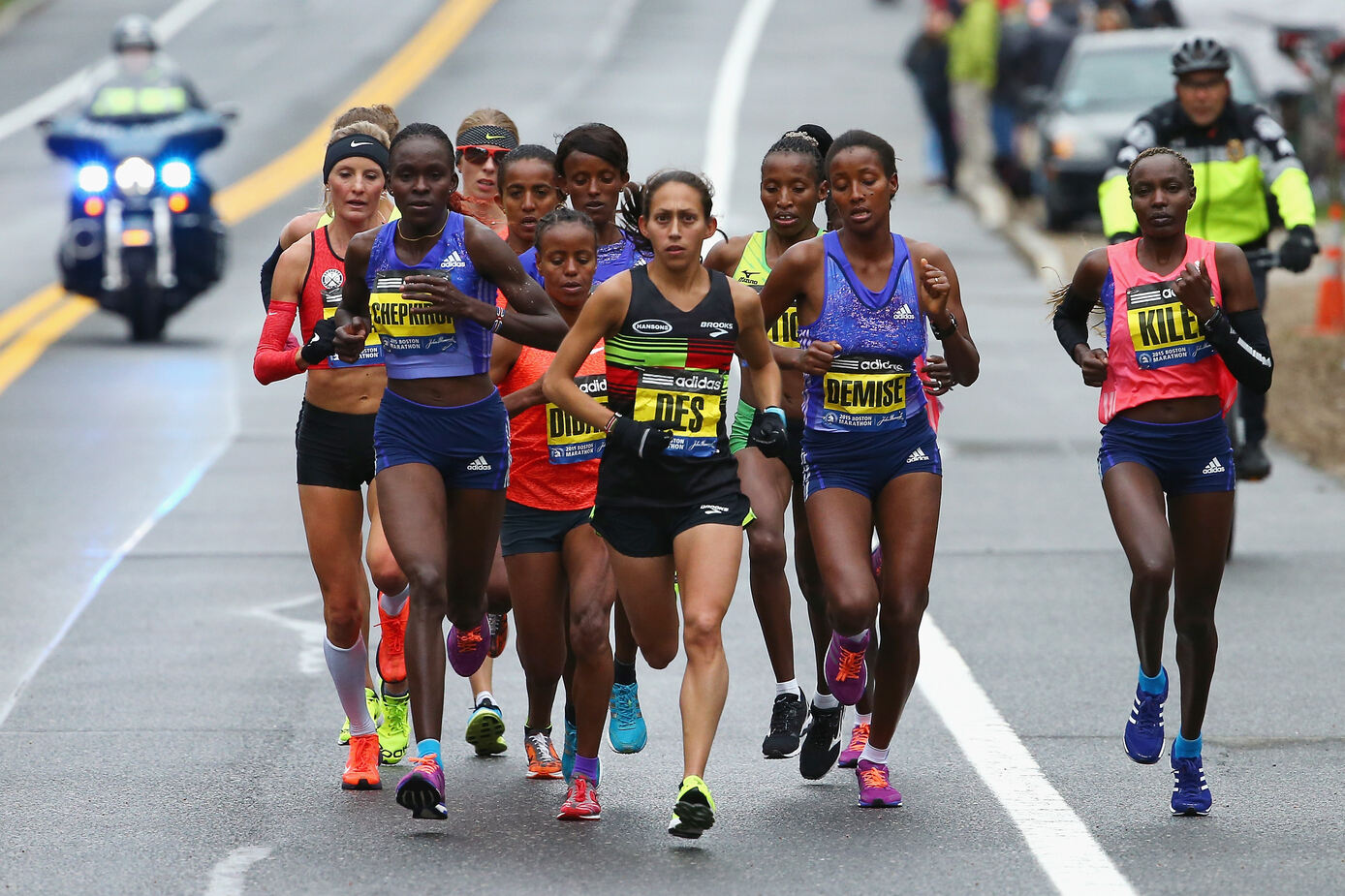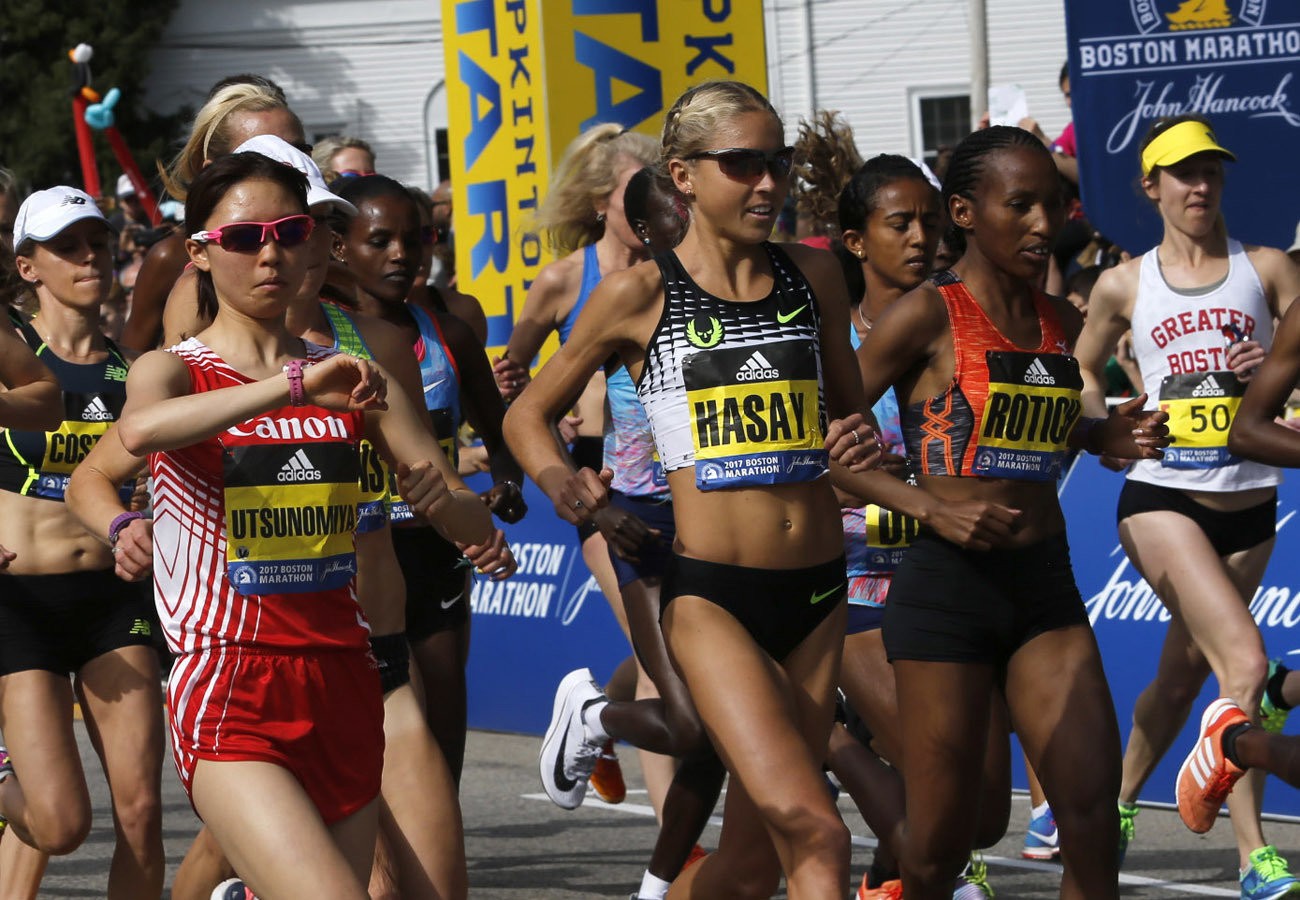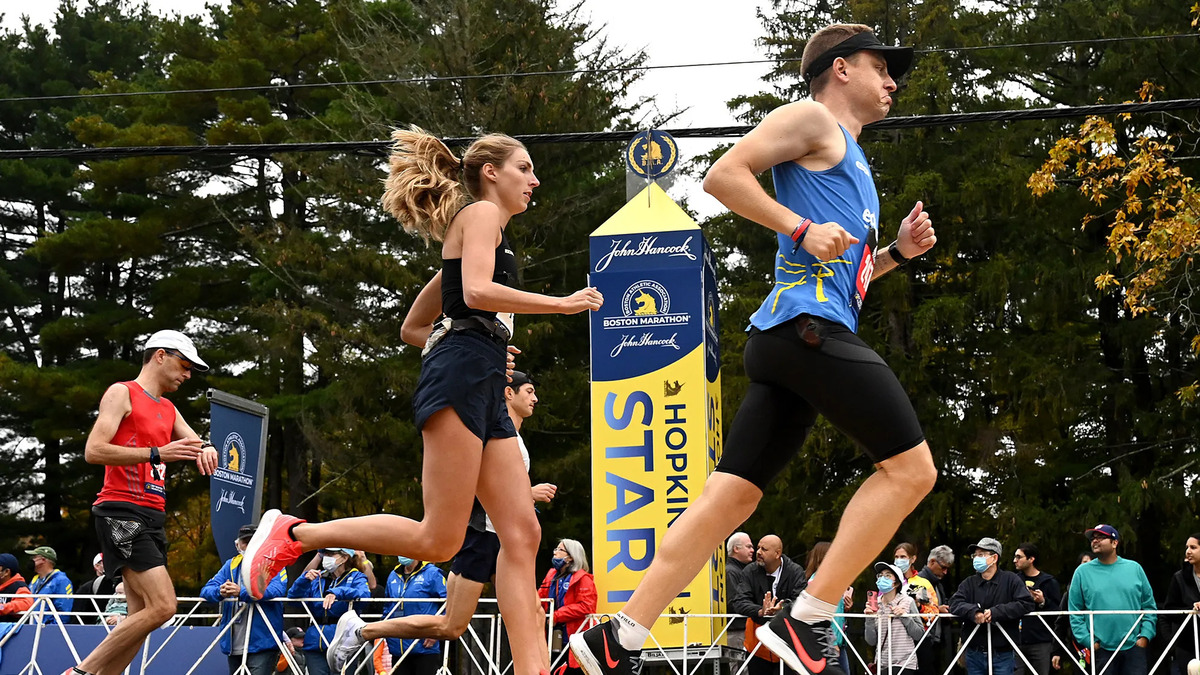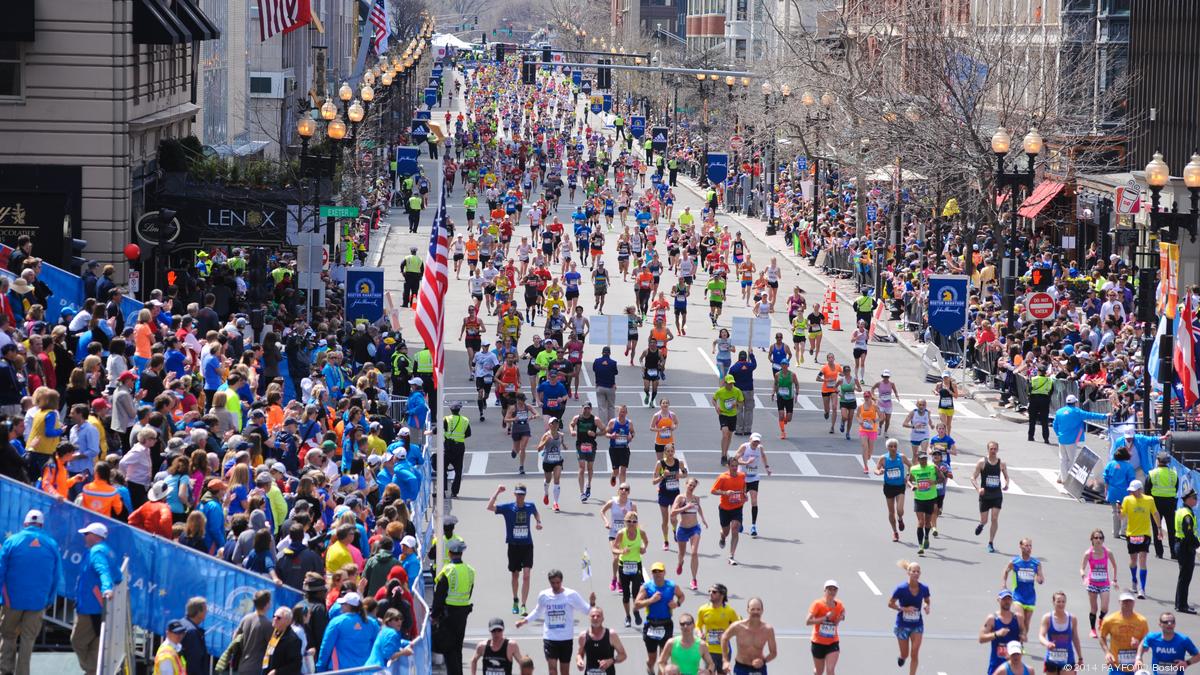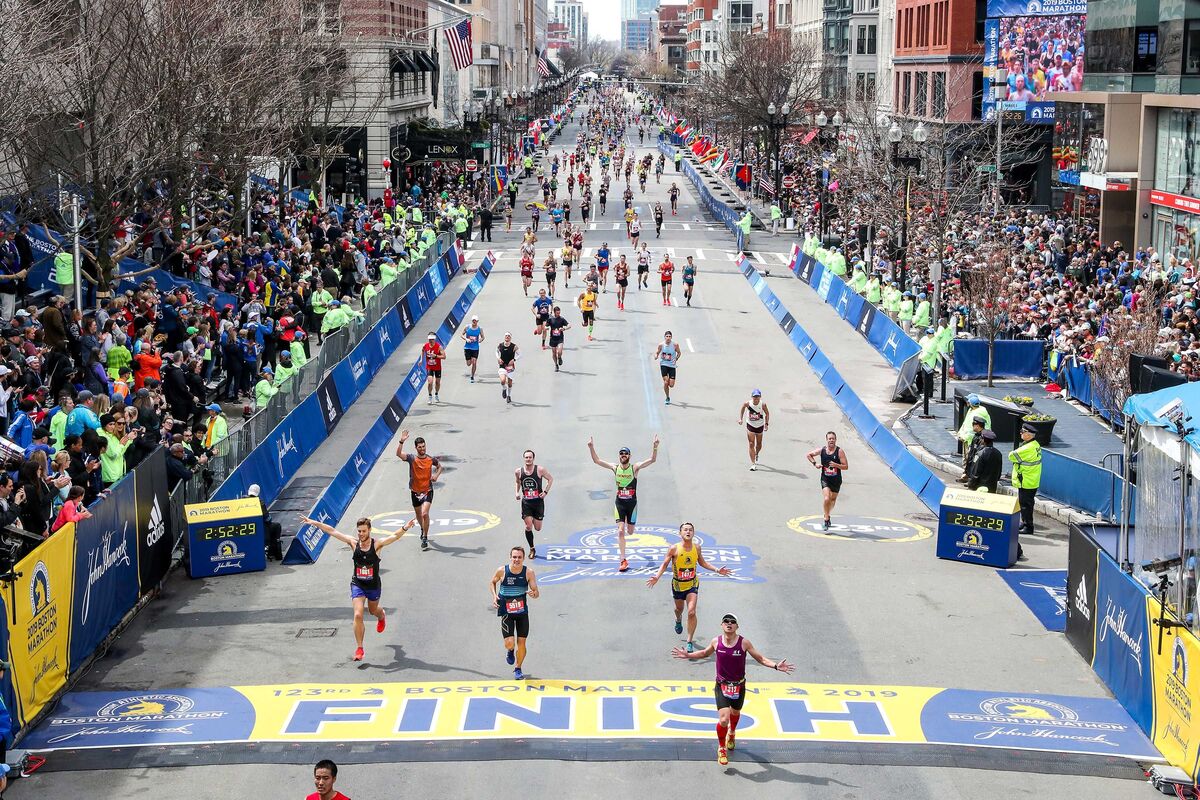

Featured
Where Does The Boston Marathon End
Modified: January 2, 2024
Discover where the Boston Marathon ends and join us for a thrilling journey through the heart of this iconic race. Don't miss out on this captivating featured event!
Introduction
Welcome to the thrilling world of the Boston Marathon, one of the most prestigious and iconic races in the world of long-distance running. This legendary event has captivated the hearts of runners and spectators alike since its inception in 1897. From its humble beginnings to its current status as a celebrated tradition, the Boston Marathon holds a special place in the history and culture of both Boston and the sporting community.
Each year, thousands of dedicated runners from all over the globe flock to Boston to test their mettle on the challenging course, seeking to conquer the world-famous 26.2-mile route. But have you ever wondered where exactly this illustrious race comes to a close? In this article, we will explore the exciting journey that runners undertake and uncover the location of the finish line of the Boston Marathon, a place that symbolizes triumph, determination, and the utmost athletic achievement.
Whether you are a seasoned marathon enthusiast, a curious onlooker, or simply someone interested in the history of prestigious sporting events, this article will provide you with valuable insights into the location and significance of the finish line of the Boston Marathon.
So, fasten your seatbelts, tie your shoelaces, and join us on this captivating journey as we uncover the answers to the question: Where does the Boston Marathon end?
History of the Boston Marathon
The Boston Marathon has a rich and storied history that dates back over a century. It all began on April 19, 1897, when the first marathon took place, making it the oldest annual marathon in the world. The race was inspired by the success of the marathon event at the inaugural modern Olympic Games in 1896 and was initially intended to be a local event to promote the sport of running.
However, over the years, the Boston Marathon grew in popularity and stature, attracting participants from around the world. The race truly gained international recognition in 1967 when Kathrine Switzer became the first registered female runner to complete the Boston Marathon, despite attempts by officials to remove her from the course. This milestone moment paved the way for women to participate fully in the marathon, and it marked a significant step towards gender equality in sports.
Throughout its history, the Boston Marathon has witnessed numerous triumphs and tragedies. It has served as a stage for remarkable performances, record-breaking feats, and unforgettable displays of perseverance. The course has seen legendary athletes like Johnny Kelley, Bill Rodgers, and Joan Benoit Samuelson etching their names in marathon history with their exceptional victories.
Tragedy struck the Boston Marathon on April 15, 2013, when two bombs exploded near the finish line, causing the loss of lives and injuring many. This act of terrorism brought shock and sadness to the running community and the world at large. However, in the face of adversity, the Boston Marathon and its participants demonstrated incredible resilience and unity.
Since that fateful day, the Boston Marathon has become a symbol of strength, courage, and determination. The motto “Boston Strong” emerged as a rallying cry, showcasing the unwavering spirit of the marathon and the city. The race has continued to thrive, uniting people from all walks of life to celebrate the power of the human spirit.
The Boston Marathon’s illustrious history and its ability to inspire individuals from every corner of the globe make it more than just a race. It is a testament to the endurance of the human body and the indomitable will of the human spirit. As we delve deeper into the world of the Boston Marathon, we will uncover the route that challenges runners, the milestone markers they encounter along the way, and the celebrated finish line that awaits them.
Route and Course Description
The Boston Marathon course is renowned for its challenging and historic route, attracting elite athletes and dedicated runners seeking to test their endurance and achieve personal bests. The race begins in Hopkinton, a town situated in Middlesex County, Massachusetts, and winds its way through several cities and towns before culminating in the heart of downtown Boston.
Runners start the race in the picturesque Main Street of Hopkinton, under the iconic “HOPKINTON” sign. From there, they face the first downhill stretch, known as “Hopkinton Hill,” which can be a thrilling start but also demands careful pacing to conserve energy for the miles ahead.
As the race progresses, participants navigate through the charming New England towns of Ashland, Framingham, and Natick. The course takes them along tree-lined residential streets, offering scenic views and enthusiastic crowds of spectators cheering them on.
Halfway through the race, runners reach the infamous “Heartbreak Hill.” Located in Newton, this challenging climb tests the mental and physical fortitude of participants. It is the most significant and notorious of the four Newton hills encountered along the course. Those who conquer Heartbreak Hill often find themselves with renewed determination and a surge of adrenaline as they journey towards the finish line.
Continuing through the towns of Brookline and Kenmore Square, the course takes a final turn onto Boylston Street, one of Boston’s prominent thoroughfares. This stretch is lined with enthusiastic spectators who cheer on the runners with unwavering support as they approach the finish line.
In the last stretch of the race, runners can catch a glimpse of the iconic finish line, located in the heart of downtown Boston. This ultimate goal serves as a beacon of hope and accomplishment, motivating participants to push through any remaining fatigue and give their all in the final moments of the race.
The Boston Marathon course is challenging due to its varying terrain, including both hilly sections and flat stretches. The undulating nature of the route demands proper planning and strategic pacing from runners. Training for the Boston Marathon often involves specific hill workouts and strength training to prepare for the demanding course.
Completing the Boston Marathon is an achievement that holds a special place in the hearts of runners. The course offers a unique blend of natural beauty, historic landmarks, and the electric energy of the enthusiastic crowd. From start to finish, the Boston Marathon route encapsulates the essence of this iconic race and represents the ultimate test of one’s endurance, resilience, and commitment.
Mile Markers along the Course
Throughout the Boston Marathon, mile markers play a crucial role in helping runners gauge their progress and providing reference points for pacing and strategy. These markers are not only practical tools but also symbolic reminders of the challenges conquered and the goals that lie ahead.
The first mile marker is located at the very start of the race in Hopkinton, signaling the beginning of the runners’ 26.2-mile journey. From there, mile markers appear at each mile interval, providing a visual representation of the distance covered.
As participants make their way through the course, they encounter significant mile markers that hold special significance for both the runners and the spectators. One notable example is “Mile 13,” which marks the halfway point of the race. Reaching this milestone gives a sense of accomplishment and serves as a source of motivation for the second half of the marathon.
Another iconic marker is “Mile 20,” known as The “Newton Mile.” This particular marker signifies the beginning of the challenging Newton hills section, with Heartbreak Hill being the most prominent. As runners pass the “Mile 20” marker, they mentally prepare themselves for the uphill battle that lies ahead.
Throughout the course, additional mile markers continue to guide participants towards the finish line. These markers not only provide physical markers but also serve as sources of encouragement and inspiration. The sight of each mile marker gives runners a sense of progress and achievements in their long and arduous journey.
Furthermore, spectators and race volunteers often line the course near the mile markers, shouting words of encouragement and support to lift the spirits of the weary runners. The presence of cheering crowds near these markers energizes participants, reminding them of the incredible community of support that surrounds the Boston Marathon.
For the elite runners, mile markers also serve as crucial checkpoints for pacing strategies and record-breaking attempts. These markers allow competitors to track their time and adjust their speed according to their race plans and goals.
As the miles pass by, runners continuously push forward, driven by the knowledge that they are one step closer to crossing the finish line. Each mile marker serves as a reminder of their progress, strength, and commitment, motivating them to keep pushing through any physical or mental challenges they may encounter.
The mile markers along the Boston Marathon course represent more than just distances; they symbolize the collective determination and spirit of all participants. These markers stand as testaments to the resilience and perseverance required to conquer the demanding route, contributing to the rich tapestry of stories and achievements woven into the history of the Boston Marathon.
Finish Line Location
The finish line of the Boston Marathon is an iconic and highly anticipated spot for both runners and spectators. Located in the heart of downtown Boston, it serves as the ultimate goal and culmination of months of rigorous training and dedication. As runners approach the finish line, they are met with a surge of adrenaline, mixed emotions, and the deafening cheers of the crowd.
The finish line for the Boston Marathon is situated on Boylston Street, near the intersection with Dartmouth Street. This iconic spot holds historical significance, as it is just a stone’s throw away from the Boston Public Library, the oldest municipal public library in the United States.
The finish line area is bustling with excitement on race day. Spectators line the sidewalks, eagerly awaiting the sight of the runners completing their grueling journey. The atmosphere is electrifying, with cheers, applause, and motivational chants filling the air.
As the runners cross the finish line, their emotions are a mix of relief, exhaustion, and overwhelming joy. The sense of accomplishment and the realization that they have conquered the notorious Boston Marathon course washes over them. This moment becomes etched deep in their memories — a testament to their dedication, perseverance, and the shared experience with fellow runners.
Over the years, the finish line area has become a symbol of unity and celebration. It is a place where the running community comes together to celebrate triumphs, support one another, and showcase the indomitable spirit of the Boston Marathon.
After crossing the finish line, runners are greeted by race officials and volunteers who offer water, blankets, and medals as a token of their achievement. Many runners embrace loved ones, shed tears of joy, and revel in the accomplishment of completing one of the world’s most prestigious marathons.
Moreover, the finish line area has witnessed countless unforgettable moments in the race’s history. From record-breaking finishes to displays of remarkable sportsmanship, this iconic spot has served as the backdrop for countless inspiring stories.
The finish line of the Boston Marathon is not only a physical marker but a symbolic representation of the determination, strength, and resilience of every individual who tackles the marathon course. It is a celebration of the human spirit and an affirmation that with unwavering determination and support, incredible feats can be achieved.
As runners cross the finish line and bask in the electrifying atmosphere of accomplishment, they join the ranks of the elite marathoners who have left their mark on the rich history of the Boston Marathon. It is a moment of tremendous personal achievement, a moment that will be remembered and cherished for a lifetime.
Evolution of the Finish Line
The finish line of the Boston Marathon has undergone significant transformations over its long and illustrious history. As the race grew in popularity and importance, so did the need for a finish line that could accommodate the increasing number of participants and spectators.
In its early years, the finish line of the Boston Marathon was a simple chalk line drawn across the road, serving as a humble marker for the runners to cross. As the race gained recognition and stature, race organizers realized the need for a more visible and permanent finish line structure.
In the late 1930s, a metal finish tape became the new standard. Runners would break through this tape at the finish line, symbolizing their triumph and completion of the race. This iconic image became synonymous with the Boston Marathon and is still a cherished tradition to this day.
Over time, the finish line area underwent further enhancements to accommodate the growing number of participants and spectators. In the 1960s, the area near the finish line on Boylston Street was widened to provide more space for the celebratory crowds.
The finish line structure itself also saw improvements. In the early 1970s, a colorful, arch-shaped banner was introduced, further enhancing the visual impact of the finish line. This arch, adorned with the words “BOSTON MARATHON,” became a recognizable landmark and a symbol of the race’s prestige.
With the rise of technology and broadcasting advancements, the finish line of the Boston Marathon became a focal point of media coverage. Television cameras captured the dramatic moments of runners breaking through the finish line tape, allowing viewers from around the world to witness the determination and triumph of the marathoners.
In recent years, additional enhancements to the finish line area have been made to ensure the safety and comfort of both runners and spectators. Security measures have been heightened to protect the event, particularly in response to the tragic events of the 2013 Boston Marathon bombings.
The finish line area has become a hub of activity and celebration on race day. Temporary grandstands are set up to accommodate the clamoring crowds, providing ideal vantage points for spectators to witness the thrilling finish moments. Banners, flags, and cheering squads add to the festive atmosphere, creating an exhilarating experience for all involved.
The evolution of the finish line reflects the growth and significance of the Boston Marathon as a premier athletic event and a beloved tradition. What started as a simple chalk line has transformed into a symbol of endurance, perseverance, and achievement.
As technology continues to advance and the race continues to evolve, it is safe to say that the finish line of the Boston Marathon will continue to be a beacon of inspiration, representing the culmination of every runner’s personal journey and the celebration of the human spirit.
Significance of the Finish Line
The finish line of the Boston Marathon holds immense significance for both the runners and the wider community. It represents the culmination of months of hard work, dedication, and training for the participants. As they approach the finish line, a mix of emotions floods over them – from relief and accomplishment to sheer exhaustion and elation.
For the runners, the finish line is the ultimate goal. It is a tangible representation of their perseverance and determination. Crossing the finish line is a testament to their physical and mental strength, a victory over the challenges faced along the marathon course. It is a moment of personal triumph and fulfillment that stays with them for a lifetime.
The finish line also symbolizes unity and camaraderie within the running community. As participants from diverse backgrounds and abilities cross the finish line, they become part of a shared experience and a collective celebration of the human spirit. The finish line provides a powerful reminder that, regardless of time or placement, each runner has achieved something remarkable.
Furthermore, the finish line of the Boston Marathon has a profound impact on spectators and the wider community. It symbolizes the culmination of years of history, tradition, and athletic achievement. The sight of runners pushing themselves to the limit and crossing the finish line inspires onlookers and instills a sense of awe and admiration.
Throughout the race, spectators gather near the finish line to cheer on the runners. Their unwavering support and encouragement create an exhilarating atmosphere that fuels the determination of the participants. The finish line serves as a rallying point for friends, families, and fellow runners, who eagerly await the arrival of their loved ones and fellow marathoners.
Moreover, the significance of the finish line extends beyond the marathon itself. It represents the resilience and strength of the city of Boston. In the wake of the tragic events of 2013, the finish line area became a symbol of unity, defiance, and the indomitable spirit of the Boston community. It serves as a poignant reminder of the power of resilience, hope, and collective triumph over adversity.
The finish line is also a beacon of inspiration for future generations of runners. As they witness the determination and jubilation of the marathoners crossing the finish line, they are inspired to set their own goals, forge their own paths, and push themselves to achieve greatness.
Finally, the finish line of the Boston Marathon represents the legacy of the race itself. It is a reminder of the remarkable achievements, historic breakthroughs, and memorable moments that have unfolded on the course throughout the years. Each runner who crosses the finish line contributes their own unique chapter to this storied legacy.
In essence, the finish line of the Boston Marathon is more than just a physical marker. It is a focal point of celebration, triumph, and human connection. It symbolizes the triumph of the human spirit over challenges, the power of community support, and the enduring legacy of one of the world’s greatest marathons.
Conclusion
The Boston Marathon is not just a race; it is an extraordinary journey that challenges the physical and mental limits of its participants. As runners take on this iconic marathon, they embark on a quest that leads them through historic towns, thrilling hills, and the unwavering support of spectators. The journey culminates at the highly anticipated finish line, where dreams are realized, accomplishments are celebrated, and the spirit of the marathon shines brightest.
From its humble beginnings to its current global recognition, the Boston Marathon holds a special place in the world of long-distance running. Its history, route, and milestones along the course offer a captivating glimpse into the allure and significance of this renowned event.
The finish line serves as the ultimate goal for every marathoner, a symbol of triumph over the challenges of the course. Crossing the finish line brings a profound sense of achievement, fulfillment, and unity to each runner who completes the journey, irrespective of their final placement or time.
Moreover, the finish line resonates with spectators and the wider community, as it represents the resilience, determination, and shared celebration of the human spirit. It inspires onlookers, ignites a sense of pride and admiration, and embodies the indomitable spirit of the Boston Marathon.
As the finish line has evolved over the years, it has witnessed unforgettable moments, celebrated milestones, and written countless stories of perseverance and triumph. It has become a symbol of the enduring legacy of the Boston Marathon, one that continues to inspire and captivate people from all walks of life.
So, whether you are a participant, a passionate supporter, or simply an admirer of the sport, the finish line of the Boston Marathon represents the culmination of a journey filled with dedication, perseverance, and the relentless pursuit of personal excellence.
As we reflect on the significance of the finish line, let it serve as a reminder that with determination, resilience, and unwavering support, extraordinary accomplishments can be achieved. The finish line of the Boston Marathon symbolizes the power of the human spirit, community unity, and the timeless pursuit of achieving the extraordinary.
